Heterologous versus homologous boosting elicits qualitatively distinct, BA.5-cross-reactive T cells in transplant recipients
- PMID: 37104041
- PMCID: PMC10322695
- DOI: 10.1172/jci.insight.168470
Heterologous versus homologous boosting elicits qualitatively distinct, BA.5-cross-reactive T cells in transplant recipients
Abstract
BackgroundThe SARS-CoV-2 Omicron BA.5 subvariant escapes vaccination-induced neutralizing antibodies because of mutations in the spike (S) protein. Solid organ transplant recipients (SOTRs) develop high COVID-19 morbidity and poor Omicron variant recognition after COVID-19 vaccination. T cell responses may provide a second line of defense. Therefore, understanding which vaccine regimens induce robust, conserved T cell responses is critical.MethodsWe evaluated anti-S IgG titers, subvariant pseudo-neutralization, and S-specific CD4+ and CD8+ T cell responses from SOTRs in a national, prospective, observational trial (n = 75). Participants were selected if they received 3 doses of mRNA (homologous boosting) or 2 doses of mRNA followed by Ad26.COV2.S (heterologous boosting).ResultsHomologous boosting with 3 mRNA doses induced the highest anti-S IgG titers. However, antibodies induced by both vaccine regimens demonstrated lower pseudo-neutralization against BA.5 compared with the ancestral strain. In contrast, vaccine-induced S-specific T cells maintained cross-reactivity against BA.5 compared with ancestral recognition. Homologous boosting induced higher frequencies of activated polyfunctional CD4+ T cell responses, with polyfunctional IL-21+ peripheral T follicular helper cells increased in mRNA-1273 compared with BNT162b2. IL-21+ cells correlated with antibody titers. Heterologous boosting with Ad26.COV2.S did not increase CD8+ responses compared to homologous boosting.ConclusionBoosting with the ancestral strain can induce cross-reactive T cell responses against emerging variants in SOTRs, but alternative vaccine strategies are required to induce robust CD8+ T cell responses.FundingBen-Dov Family; NIH National Institute of Allergy and Infectious Diseases (NIAID) K24AI144954, NIAID K08AI156021, NIAID K23AI157893, NIAID U01AI138897, National Institute of Diabetes and Digestive and Kidney Diseases T32DK007713, and National Cancer Institute 1U54CA260492; Johns Hopkins Vice Dean of Research Support for COVID-19 Research in Immunopathogenesis; and Emory COVID-19 research repository.
Keywords: Adaptive immunity; COVID-19; Organ transplantation; T cells; Vaccines.
Conflict of interest statement
Figures
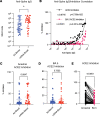
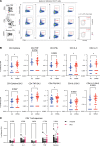
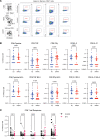
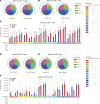

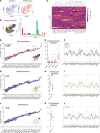
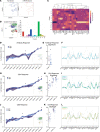
Similar articles
-
SARS-CoV-2 Variants Omicron BA.4/5 and XBB.1.5 Significantly Escape T Cell Recognition in Solid-organ Transplant Recipients Vaccinated Against the Ancestral Strain.Transplantation. 2024 Apr 1;108(4):e49-e62. doi: 10.1097/TP.0000000000004873. Epub 2023 Nov 28. Transplantation. 2024. PMID: 38012843
-
Durability of Heterologous and Homologous COVID-19 Vaccine Boosts.JAMA Netw Open. 2022 Aug 1;5(8):e2226335. doi: 10.1001/jamanetworkopen.2022.26335. JAMA Netw Open. 2022. PMID: 35947380 Free PMC article.
-
Humoral and cellular immunogenicity of homologous and heterologous booster vaccination in Ad26.COV2.S-primed individuals: Comparison by breakthrough infection.Front Immunol. 2023 Mar 7;14:1131229. doi: 10.3389/fimmu.2023.1131229. eCollection 2023. Front Immunol. 2023. PMID: 36960070 Free PMC article.
-
COVID-19 Prevention in Solid Organ Transplant Recipients: Current State of the Evidence.Infect Dis Clin North Am. 2023 Sep;37(3):459-473. doi: 10.1016/j.idc.2023.03.002. Epub 2023 Mar 22. Infect Dis Clin North Am. 2023. PMID: 37217369 Free PMC article. Review.
-
Measures to Increase Immunogenicity of SARS-CoV-2 Vaccines in Solid Organ Transplant Recipients: A Narrative Review.Vaccines (Basel). 2023 Nov 25;11(12):1755. doi: 10.3390/vaccines11121755. Vaccines (Basel). 2023. PMID: 38140160 Free PMC article. Review.
Cited by
-
Rapid Wane and Recovery of XBB Sublineage Neutralization After Sequential Omicron-based Vaccination in Solid Organ Transplant Recipients.Clin Infect Dis. 2024 Sep 26;79(3):652-655. doi: 10.1093/cid/ciae279. Clin Infect Dis. 2024. PMID: 38953683 Free PMC article.
-
Neutralizing antibody responses and cellular responses against SARS-CoV-2 Omicron subvariants after mRNA SARS-CoV-2 vaccination in kidney transplant recipients.Sci Rep. 2024 May 28;14(1):12176. doi: 10.1038/s41598-024-63147-z. Sci Rep. 2024. PMID: 38806644 Free PMC article.
-
Effectiveness of heterologous and homologous COVID-19 vaccination among immunocompromised individuals: a systematic literature review and meta-analysis.Antimicrob Steward Healthc Epidemiol. 2024 Sep 26;4(1):e152. doi: 10.1017/ash.2024.369. eCollection 2024. Antimicrob Steward Healthc Epidemiol. 2024. PMID: 39346662 Free PMC article.
-
Vaccination Strategies: Mixing Paths Versus Matching Tracks.Vaccines (Basel). 2025 Mar 13;13(3):308. doi: 10.3390/vaccines13030308. Vaccines (Basel). 2025. PMID: 40266207 Free PMC article. Review.
-
COVID-19 vaccination induces distinct T-cell responses in pediatric solid organ transplant recipients and immunocompetent children.NPJ Vaccines. 2024 Apr 5;9(1):73. doi: 10.1038/s41541-024-00866-4. NPJ Vaccines. 2024. PMID: 38580714 Free PMC article.
References
-
- Haidar G, et al. Prospective evaluation of Coronavirus Disease 2019 (COVID-19) vaccine responses across a broad spectrum of immunocompromising conditions: the COVID-19 vaccination in the immunocompromised study (COVICS) Clin Infect Dis. 2022;ciac103(1):e630–e644. doi: 10.1093/cid/ciac103. - DOI - PMC - PubMed
Publication types
MeSH terms
Substances
Supplementary concepts
Grants and funding
LinkOut - more resources
Full Text Sources
Other Literature Sources
Medical
Research Materials
Miscellaneous

